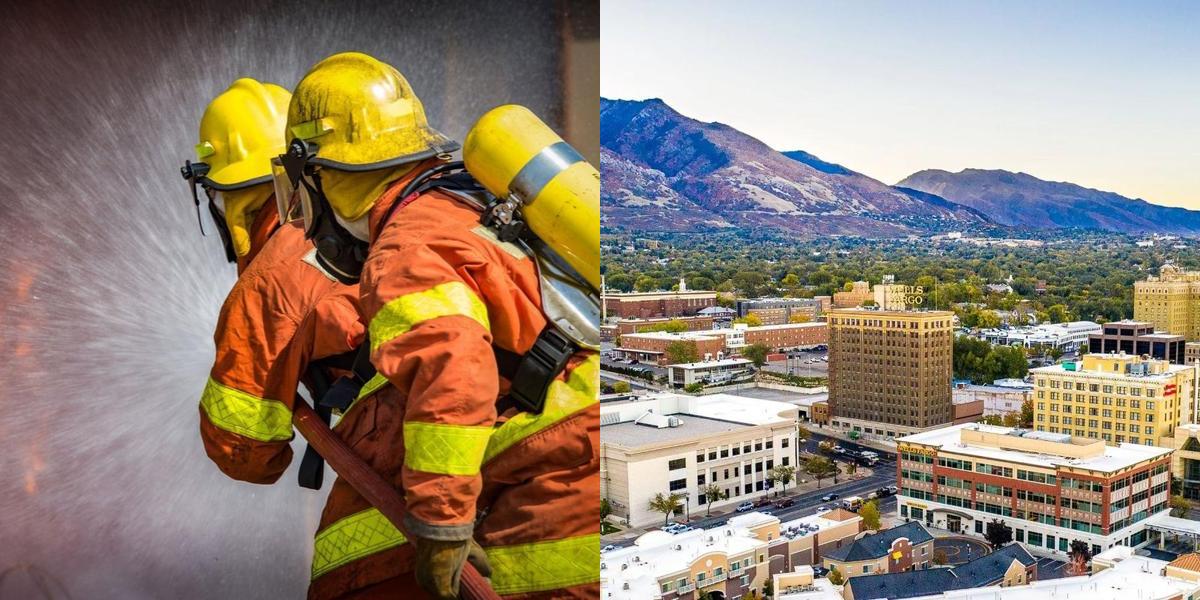How to Become a Firefighter in Utah

What is a Firefighter?
A firefighter is a trained professional who is responsible for extinguishing fires and responding to other emergencies. They work as part of a team to protect people, property, and the environment from the dangers of fires and other hazardous situations. Firefighters also provide medical assistance, perform search and rescue operations, and educate the public about fire safety.
How do I get a job as a Firefighter?
After obtaining your firefighter certification, the next step is to find a job as a firefighter. The process of getting a firefighter job can be competitive, as there are often many candidates vying for a limited number of positions. Here are some steps to help you increase your chances of getting a job as a firefighter:
-
Research Fire Departments: Start by researching fire departments in your area or the area where you wish to work. Look for information on their hiring process, application requirements, and any upcoming job openings. Most fire departments have websites with this information readily available.
-
Network: Networking can be a valuable tool in finding a firefighter job. Attend fire department open houses, job fairs, and other events where you can meet and network with firefighters and fire department personnel. They may be able to provide valuable insights and connections that can help you in your job search.
-
Volunteer: Consider volunteering at a local fire department or fire station. This can be a great way to gain hands-on experience, learn more about the profession, and make connections in the firefighting community. Volunteering also demonstrates your commitment and dedication to the field, which can be a valuable asset when applying for jobs.
-
Prepare Your Resume and Cover Letter: Craft a professional resume and cover letter that highlights your qualifications, training, and any relevant experience. Tailor your resume to each specific job application, emphasizing the skills and experiences that are most relevant to the position you are applying for.
-
Prepare for Interviews: Once you have submitted your application, you may be invited for an interview. Prepare for the interview by researching the fire department, understanding their mission and values, and familiarizing yourself with common interview questions. Practice your answers and consider conducting mock interviews to improve your confidence and performance.
-
Stay Current and Continuously Improve: Firefighting is a dynamic field, and it is important to stay current with the latest techniques, technologies, and safety protocols. Consider attending workshops, seminars, and training programs to enhance your skills and knowledge. Continuously improving yourself will make you a more competitive candidate for firefighter jobs.
-
Be Persistent and Patient: Getting a job as a firefighter can take time, and it is important to be persistent and patient. Keep applying to different fire departments, even if you receive rejections or do not hear back immediately. Remember that the competition can be fierce, and it may take several attempts before you are successful in securing a firefighter job.
Career Paths and Opportunities after Becoming a Firefighter
Becoming a firefighter opens up various career paths and opportunities within the fire service. Here are some of the potential career paths that firefighters can pursue:
-
Firefighter/Paramedic: Many firefighters also obtain paramedic certification, allowing them to provide advanced medical care in addition to firefighting duties. This can be a rewarding career path for those interested in emergency medical services.
-
Fire Inspector: Fire inspectors play a crucial role in preventing fires by inspecting buildings, ensuring compliance with fire codes, and educating the public on fire safety. This career path requires knowledge of fire codes and regulations.
-
Fire Investigator: Fire investigators are responsible for determining the cause and origin of fires. They work closely with law enforcement agencies and may be involved in criminal investigations related to arson.
-
Fire Prevention Specialist: Fire prevention specialists focus on educating the public about fire safety, developing fire prevention programs, and conducting fire safety inspections. This career path is ideal for those interested in community outreach and education.
-
Fire Captain or Battalion Chief: With experience and leadership skills, firefighters can advance to supervisory positions such as fire captain or battalion chief. These roles involve managing and leading firefighting teams, making strategic decisions, and overseeing operations.
-
Training Officer: Firefighters with extensive experience and expertise may become training officers, responsible for developing and delivering training programs for new firefighters and ongoing professional development for existing personnel.
-
Emergency Management: Firefighters can also transition into roles within emergency management agencies or organizations. These roles involve coordinating emergency response efforts, developing emergency plans, and managing disaster situations.
-
Specialized Teams: Fire departments often have specialized teams such as hazardous materials (HAZMAT) response teams, technical rescue teams, and wildland firefighting teams. Firefighters can join these specialized teams based on their interests and skills.
It is important to note that these career paths may require additional training, certifications, or education beyond the initial firefighter certification. Firefighters can continue their professional development by pursuing advanced certifications, completing degree programs in fire science or related fields, and participating in ongoing training opportunities.
How Much does a Firefighter Make?
The salary of a firefighter can vary based on factors such as location, experience, and the size of the fire department. According to the Bureau of Labor Statistics, the median annual wage for firefighters was $50,850 in May 2020. The lowest 10 percent earned less than $25,850, while the highest 10 percent earned more than $94,720.
For entry-level firefighters, the starting salary can be lower than the median wage. However, as they gain experience and move up the ranks, their salary can increase significantly. It's important to note that these figures are just averages, and the actual salary can vary depending on various factors.
Final Thoughts
Becoming a firefighter is a challenging and rewarding career choice. It requires dedication, physical fitness, and a commitment to serving the community. By obtaining your firefighter certification, networking, and staying current with industry trends, you can increase your chances of securing a job as a firefighter. Once you have entered the fire service, there are various career paths and opportunities available for advancement and specialization. Whether you choose to become a firefighter/paramedic, fire inspector, fire investigator, or pursue another career path within the fire service, you will be making a difference in the lives of others and contributing to the safety of your community.
Considering a change in your career? We've gathered some perspectives to help you in your journey. You can explore several of these:

Sunshine is a member of the School Growth team at Dreambound, where she assists students and schools with their billing and onboarding needs. She is a licensed mechanical engineer. Outside of work, she enjoys road trips with her family, discovering cozy cafes, and exploring her love for art.



